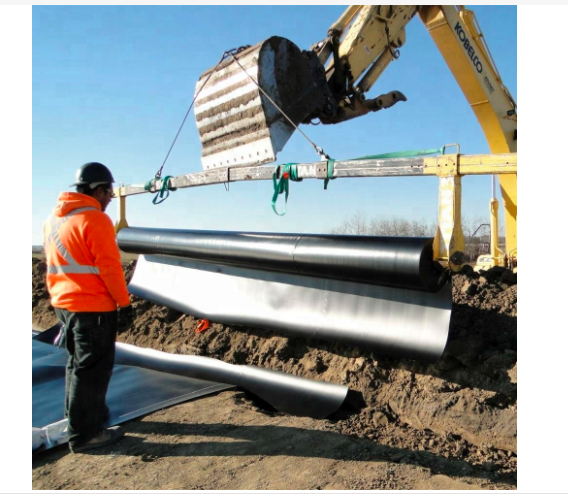- Understanding the Role of Geomembrane Liners in Waste Management
- Innovations in Geomembrane Liners for Water Management
- Geomembrane Liners: A Comprehensive Guide
- The Future of Geomembrane Liners in Civil Engineering
- Geomembrane Liners: Enhancing Landfill Stability
Manager:
WhatsApp:+86 177 0135 2670
Tel:+86 177 0135 2670
Email:marketing@okorder.com
Address:3rd Floor, No.2 Building, No.1 Sanlihe Road
Landfill Geomembranes: Synonymous with Innovation and Environmental Stewardship
The dance of waste management and environmental conservation involves landfill geomembranes. These are artificial barriers that have been carefully designed to prevent contamination from leaking out of modern landfills. My exploration into the issue of landfill geomembranes has involved scientific curiosity and a personal examination of our collective responsibility towards the earth.
Landfill Geomembrane Basics: The Protective Shield
At first, landfill geomembrane may appear to be just one other industrial material but it is actually not. They are the last line against pollution in the environment caused by waste, meaning that they do not allow harmful elements to penetrate through our landfills into soils and water systems nearby. These geomembranes are typically made from high-density polyethylene (HDPE), polyvinyl chloride (PVC) among other flexible polymers because they are durable and resist chemicals.

A Look Back in Time
The changing understanding about how the environment works can be seen from the history of landfill geomembranes. For instance, HDPE became popular in the 80s because it was more chemical resistant than others and had a good degree of flexibility. However, over time it was discovered that HDPE could fail due to stress cracking at lower temperatures. As such, there has been development of better formulations to cater for this weakness as well as improved installation techniques that look into long-term integrity of the liner.
The Complexities Involved during Installation
Installation of a landfill geomembrane is artistic since it necessitates precision before actualization. This delicate operation involves connecting large sheets together by welding them so as to form an unbroken barrier which calls for skilled operators using quality tools or equipment. Nevertheless, handling or treating the geomembrane properly still remains crucial to avoid its inefficiency arising due to damages that may result.
A Critical Connection- The Interface
This link between waste/soil and geomembrane is vital. The liner remains stable even as the landfill contents settle and shift over time due to roughness on the surface of the geomembrane which increases interfacial shear strength. It is this focus on interface that makes a landfill geomembrane dependable in waste management systems.
Aging and Degradation: The Longevity Challenge
Landfill geomembranes are designed for long service life but still they age with time. These geomembranes can therefore deteriorate over time due to exposure to UV radiation, varying temperatures or hostile nature of some waste by-products. Thus, knowledge about these factors plus their mitigation are key to keeping up the efficacy of a landfill liner.
Proactive Approach
By monitoring carefully and maintaining proactively, it has been established that a landfill geomembrane’s long term performance can be predicted and managed. As such, we should come up with ways to simulate aging process and conduct frequent integrity surveys in order to predict any problems before they become critical. This will ensure that safety of the landfill geomembrane system remains paramount.
The Balancing Act: Environmental Impact
Use of land fill geo-membranes also comes with environmental consideration worth noting although it stops contaminants from leaking out into the environment. However, proper measures should be put in place when manufacturing these artificial materials as well as disposing them off after use. It is an ongoing discussion within the field of geosynthetic technology trying to find harmony between effective waste containment and overall environmental imprints associated with this form of liners for landfills.
Innovations towards a Sustainable Future
The development of more sustainable geomembrane materials and installation practices is paramount as we look to the future. These involve use of recycled plastics, self-healing materials, and upgrading the energy efficiency of geomembrane production processes. This in turn will help to reduce the environmental footprint of landfill operations.
The Human Element: Personal Reflections
For me, landfill geomembranes have been something quite personal. It has made me ponder our relationship with waste and the environment. Whenever I see a landfill, it brings to my mind how intricately we have plotted out systems to save our globe from danger. It is humbling to contemplate what we do so that our waste does not affect the world.
A Call to Action
I am personally moved as an individual to be part of discussions on landfill geomembranes and environmental stewardship. Actions such as reducing waste production, recycling or advocating for policies promoting sustainable waste management matter. I am convinced that it’s possible for us achieve some meaningful change.
Conclusion: A Legacy of Care for the Earth
Ultimately, these geomembranes used in landfills are more than just technical solutions; they represent our dedication to preserving the natural landscape for posterity’s sake. We must ensure that their evolution keeps pace with global developments around them while being sensitive about their environmental impact. The landfill geomembrane is emblematic of our resolve to conserve Earth and this responsibility must continue through prudence and attentiveness.
- Previous:The Versatile World of Geomembrane Products: A Personal Journey into Environmental Protection
- Next:Embracing the Engineering Marvel of Textured Geomembrane
-
2024-07-22Looking at Landfill Geomembrane Applications






